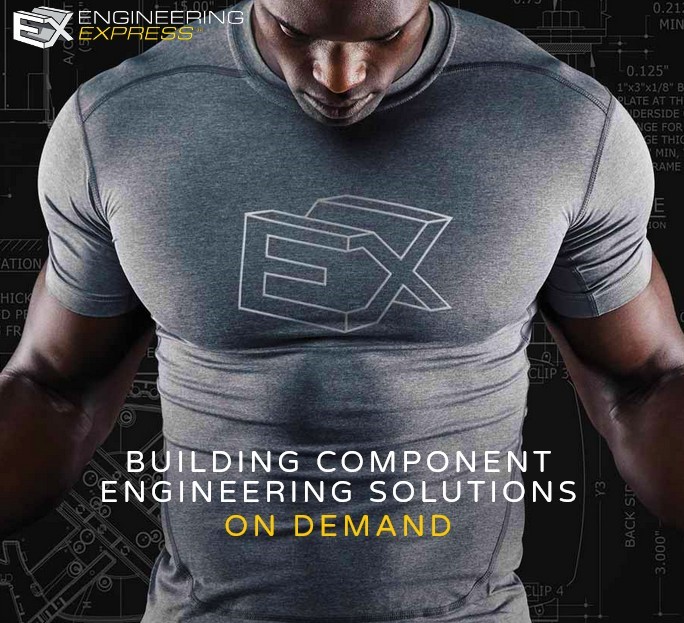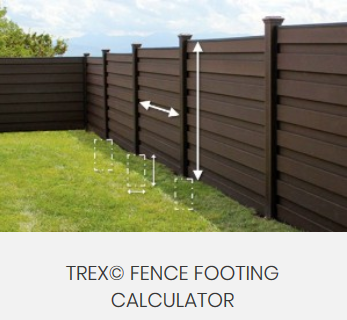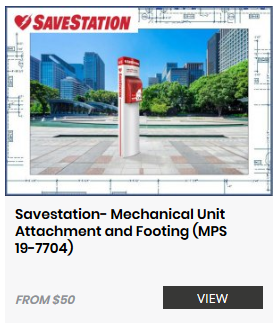Innovative Firm Delivers Disruptive Technology
To An Age-Old Profession
If you’re in the construction or design industry you know the drill. You have a quick design need. You email your engineer and wait. Then you call and wait. Then you get an answer, and a bill for their time. You have so many questions to improve the design but going through that process is draining, and expensive.
Enter Engineering Express®, a national structural building component firm that is flipping that model and delivering unheard-of engineering solutions to those in need.
“Technology is advancing so fast. Of all people, engineers should be implementing these advancements into their own workflows”. It’s our responsibility to do so in fact” claims Engineering Express’s CEO, Frank Bennardo, PE. Taking cues from the likes of Amazon™ for shopping, Uber™ for crowd sourcing, and online restaurant ordering of all things, the company has managed to provide their clients with zero-second solutions using a three-tier system which has also spawned new industries. Curious? Confused? We were too, so we decided to dive deeper into these ambitious claims.
The Problem
Before we could understand their solution, we had to better define the problem. While the requirement for engineers to seal the designs they create has been around for some time, the need for signed and sealed

engineering for permit has been on the rise in the US. A combination of what appears to be an increase in national disasters (hurricanes, tornado’s, floods, earthquakes, etc.) compounded by today’s age of social media awareness has sparked heightened insurance, construction, and real estate awareness as well as added liability. That translates to more pressure on building departments to follow the code which includes the requirement for sealed plans and also succumb to the developing surge in privatized plan review and inspection. Those third-party reviewers not only ask deeper questions about proposed designs, but their client also derives significant benefit from the quality and quantity of their inquiries and results. States and smaller jurisdictions that never even knew to ask for sealed engineering plans are now requiring pages of sealed plans calculations from those third-party reviewers, and they’re questioning the accuracy of those calculations, asking for revisions unheard of just a few years ago.
Smaller building component designs within a project- components such as windows, doors, roofing, siding, canopies, sun rooms, pools, decking, railings & fences, signage, mechanical equipment as well as emerging components like solar panels, even smartphone enabled kiosks like Amazon-Style lockers, bike ride sharing devices, and information panels are increasingly being caught in this need for sealed engineering for permit. What was once easy extra cash for ‘old time’ moonlighting, retired, and one-man-band engineers that fell under the radar of scrutiny with marginal plans is now being questioned, and the correspondence time between these part time engineers and the industry is becoming increasingly unacceptable.
Add to that the exponential advancements in building code requirements and referenced standards, and the lack of available software to perform such highly customized tasks, and you come to the tipping point in the industry now being experienced. These smaller firms simply lack the resources to research and design the variety of elements required to execute work which was much simpler when they began. Take ASCE-7 design manual for example which governs the design of wind, snow, and seismic forces on structures. ASCE 7-16 is emerging across the country and takes these designs to chapters of study and calculation which not long ago were just pages and paragraphs of mention in earlier versions of the manual. Part time and retired engineers just can’t keep up with all these rules. When you consider that the same increase in requirements is happening in concrete, steel, aluminum, fabrics, anchorage, plastics, glass, and new materials in building components, and add in newly emerging requirements for elements such as flood, blast, energy, fire, and life safety, and you will see that you have a problem unsolvable by traditional means.
A Glimmer of Hope
While each state publishes its own engineering laws and rules, taken together, there is a general consensus among their intent. Take Florida’s Administrative Code 61G15 18.011(2) , which defines Engineering Design as “The process of devising a system, component, or process to meet desired needs. It is a decision-making process (often iterative), in which the basic sciences, mathematics, and engineering sciences are applied to convert resources optimally to meet a stated objective”.
It continues, stating that this definition is intended “to be interpreted in its broadest sense”. In particular, the words ‘component or process’ and ‘convert resources optimally’ operate to indicate that sociological, economic, aesthetic, legal, ethical, etc. considerations can be included”.
This general understanding of an engineer’s duty opens the possibility that, as times are changing, so can we. In fact, its an engineer’s duty to do so.
Take for example the rapid evolution of an engineer’s seal. It’s been long understood that an engineer’s protection of the authenticity of their work by emboss or ink stamping on paper is as archaic as the kings wax seal (and in fact has evolved from that ancient technology). People are now implementing ePermit systems in building departments everywhere, requiring engineers and architects to ‘digitally seal’ their work. This means that the work product must be digital and remain digital.
Think of it, are engineers really operating under their truest sense when the perform calculations on a computer only to print them on paper, scan them back in and then reintroduce them to the digital world? Perhaps there could be another way, a way in which they start and stay digital. What benefits can come of that?
Solving the Problem
Take a step back and consider. How can engineers harness today’s technology and also harness the explosion of the millennial-fueled, gig-based workforce to redefine their industry, and how close to ideal can they get?
Engineering Express first started with what they had the most of: years-worth of collections of calculations and design details. They then assigned a central team to catalog that material, ensuring they would be properly referenced, secured, and available from the cloud. The next step was to construct an interface to allow both clients, in-house staff, and outside resources to collaborate and utilize these tools, all controlled from a central location and constantly monitored and updated to meet developing codes and industry standards-of-care. How did we pay for it? It paid for itself by its extreme efficiency, which in turn fueled the company’s growth and further refinement of systems and processes.

From a business perspective though, there was still a huge gap between an efficient office and iterating a complex building component design at the mostly sub-thousand-dollar fee that the construction industry increasingly needs faster and faster, and with more and more questions. That’s where the web comes in. Back in the day, engineers used to give floppy disks containing spreadsheet files so their clients could do their own pre-checks and send their ‘optimized design’ to the engineer for a quick seal (and it’s still happening today in fact in far too many instances). This is wrong on so many levels. Who guarantees the formulas remain unchanged? What happens when there is an update to the calculation? How many people was this copied to? And the most important of all – who is in responsible charge for the design process if the source code lies in the hands of the client?
Web technologies today have advanced so much that one can now safely and accurately query source spreadsheet files from many interfaces with no risk in revealing or copying the source code. And if there is a change needed to the source calculation, one could do that at any time and the updated result or newer feature would be instantly accessible to all those who use the system.
Of course, one would have to build an entire infrastructure around this new method of design interactivity which has been the mission of Engineering Express for many years. Only now does every single piece of technology needed to fulfill this vision not only exist but also has been adopted by the community at large. Systems like this are powering visualization models, helping with accurate cost estimating, pre-design conditions, answering what-if scenarios and more powered by API and front-end interfaces by Engineering Express and other companies in various forms. Optimal results can be digitally transmitted to Engineering Express and reviewed by one of their engineers to complete the design in record time.
More to The Solution

Having interactive calculators solve everyday engineering questions is a game changer, but we need more to solve today’s needs of the industry. Their story continues.
Understanding that plans still rule the world, the creation and distribution of these plans would also have to endure disruption. Most product evaluation and building component plans are developed as ‘Master plan sheets’, sealed engineering for permit that contain a range of solutions for a given item, minus a site-specific address. Take a plan for a fence for example. The plan may include charts to allow a range of widths, heights, and wind areas for a given product type. Engineers of all kinds make these plans everywhere. Only now, they must be made increasingly quickly, with an engineer’s seal, and sometimes with a digital seal for ePermit filing.
If Amazon can sell practically everything under the sun online, why can’t an engineering firm provide these pre-engineered plans online as well? Engineering Express’s online plan store contains hundreds of pre-engineered, certified plans and evaluation reports for over 40 states in the US and Puerto Rico. They keep a stock of pre-sealed engineering plans on hand for rapid deployment to those in need for quick permitting. And with multiple professional engineers on staff, plans are reviewed and approved in minutes.
Worlds Collide
Its evident plans are here to stay, whether in hardcopy or digital form. But these online tools have traction and are advancing at light speed.

Understanding the need for the existence of both engineering models, Engineering Express has found a way to combine the two. Every master plan and product evaluation produced by the firm carries a digital counterpart marked by a unique web address using ‘ecalc.io’, a tiny URL system owned and maintained by the firm. The address appears on the plan and in QR code format for simple way to get from plan to online tool. A simple web address such as http://ecalc.io/wind for example referenced from many wind-related master plan sheets, allows a webpage to answer frequently asked wind questions, help with wind calculations, and offer needed sealed wind engineering designs for permit.
The master plans typically contain charts with 100 or less permutations, but the digital counterparts could contain thousands, even millions of possibilities easily accessible to the highest degree of precision, available at an instant. Interpolation and extrapolation become a breeze, and engineering certification of any needed design is just a click away.
QR codes are being used for all sorts of things- everyday things like ordering products online to requesting a ride share to transferring money, social interaction, product comparison, and the list goes on. People quickly adopt successful new apps and accept them as the new norm. This wasn’t the case just a few years ago. QR codes, those squares that nobody knew what to do with, are now on soda cans, in store isles, newspapers, and billboards, offering the public an instant peek at digital counterparts to their analog world with just a view from their camera.
The digital presence of online plans also opens up incredible opportunities. Plans typically contain information about what anchor to use or caulk to apply, but the web counterpart can easily help with things like purchasing those items, showing videos of how to install, and provide maintenance and repair parts for years to come. Just imagine the possibilities of industries that could be involved with these dynamic marketplaces and what an asset it would be not only to the contractor but to the consumer as well. These pages help with permitting, design, and can even help find the perfect blinds that fit with that window.
The Final Mile
Let’s be honest, master plans and online calculators are helpful, but only for a limited spectrum of applications. What about those site-specific needs beyond master plans, the one’s that need actual design specifications for a specific application? The truth is, most projects need one-on-one consultation, a detailed quotation for work, and job-specific plans with matching custom calculations.
Years in development and refinement, Engineering Express’s third tier in their three-tier solution set provides a grand and unique solution. Employing business concepts of many of today’s cutting-edge industry disruptors, the model of the consulting firm turns upside-down.
“We’ve been collecting data on building components for years” states CEO Frank Bennardo. “We see what we do very similar to what a restaurant does. When you know what you sell, you can summarize that on a menu, inclusive of prices and adjustments”. With all the engineering work in these industries already designed, calculated, and quoted countless times, these data points allowed them to develop a proprietary engineering ordering and quoting system that captures the data needed and instantly totals the fee and time it will take to provide the custom design. And if you want their staff to walk you through it, live help and trained staff are just a click or call away.
The biggest challenge was assembling a workforce to complete these many tasks. Engineering Express again took to the cloud and built an enterprise-class solution to re-define the entire engineering workflow process, appropriately named ‘Task Cloud’.
“We used to use Salesforce which had a project management back end called FinancialForce, but it just couldn’t keep up with today’s gig-based workforce and provide the custom solution we needed to scale, so we built it ourselves” Frank explains. More than two years in development, the company now co-owns TaskCloud.com, a next-generation project bidding, management and work distribution work system focused on the Engineering, Architecture, and similar service-based industries. ‘We didn’t realize it when we started” Frank said. “But we just built the next generation business model not only for project management, but it also includes the most advanced Uber-style work distribution and assignment system in our industry”.

Our ExpressPass System is built from the TaskCloud framework and is feature-packed with innovations starting with the consulting model itself. The concept of license-per-user just doesn’t work anymore, it’s a gig-based economy. ExpressPass allows a firm to add any number of freelance designers who want to complete tasks to become certified in specific skills that can be acquired through specific training courses. Once certified, those designers can bid on work, be rated for their performances, and rate their job experiences. This data drives their fees and curates a top-tier workforce, just like Uber. And with more firms joining in to TaskCloud & ExpressPass, the pool of qualified designers grows as well. Designers all report to in-house senior staff that interacts with clients so the process with our clients remains personable, professional, and seamless.
This phenomenon has become a sensation with engineering college students, who opt for flexible work schedules, rewarding work, and a chance to put employment with engineering firms on their résumés.
“We have summer interns to work at the firm and going back to school telling their friends about this wild experience”. They even had foreign exchange students come through the firm not only willing to work remotely as a freelance designer but asking if they could create their own network where they manage designers they recruit for a piece of the fee (this option may be included in a future release).
“Freelance designer supply has outstripped the ability to assign work right now” Frank explains, a flip in the workforce paradigm and proof that this new model of staffing is the future.
The firm is fast evolving to a core team of engineers and managers who once processed the work but are now processing the resources, training modules, management, and fee structures that power TaskCloud and the designers to do their work. The system is designed to be self-correcting, getting smarter with every design as it measures productivity, quality of training vs. work product, workforce availability, and client satisfaction to highly granular detail.
Other Innovations of TaskCloud include a ‘file wall’ that allows Taskers to post and interact with their work Facebook-Style, a client portal using an ‘ExpressPass’ smart order system that curates a customized experience for each client, and an advanced communications portal complete with text alerts and live help every step of the way.
Engineering Express is on-boarding firms looking to ride the growing phenomenon, especially in this remote, all-digital work world. A single monthly membership fee for an unlimited number of users, staff, and their own designers is available for a fee. An alternative option includes and an all-access pass to available designers in the network. For the fee of less than one staff member, this model transforms the future of the engineering and architectural labor force and can also provide a platform for access to online plan store items, digital calculation interfaces, and curated solutions for their clients. Custom site features are also welcome through TaskCloud’s full time staff of developers.
Looking Forward
One can quickly realize this all-encompassing platform delivers a new paradigm in design and consultation. Digital technology allows connections to services and resources never imagined in this industry. Digital data means connection to Building Information Modeling, Augmented Reality, and integrations with larger software platforms. The pieces and parts make up the building-all that “by others” stuff on plans. Imagine in just a few short years augmented reality glasses will allow a walk through a building and display detailed product information about everything in view. The input data will come from digital building components that are powered by Engineering Express’s systems.
With a digital audience, solutions connect to solutions with precision and accuracy. Engineering Express has already curated a host of solutions for companies like Stanley Access Technologies, Trane, Kohler, and Four Seasons Sunrooms. The company has also built a unique model for Eastern Metal Supply, a half-billion-dollar distributor of aluminum and related metal products across the US, powering EasternMetalEngineering.com, a dynamic engineering support system to quickly respond to the engineering needs of hundreds of products and services across the US.
Engineering Express continues to advance the technology, creating solutions for the industries they service, associations, and manufacturers and their installers across the US. They continue to vet strategic partners such as Permits.com, allowing Engineering Express to offer the certified engineering plans for permit and the permit solution to help when necessary. Interested parties should contact [email protected] and of course you could experience their ecosystem of plans, calculations, and smart order systems at EngineeringExpress.com. And remember to click on the names of clients that appear on their stunning home page display screens, they will transform your web experience into another one of their curated client sites that are helping to make them famous.
